African antelope dominate safari parks and reserves all across the continent. They are more populous than any other kind of large mammal, yet they are often overlooked in the clamber to see the big five.
Elegant and vibrant African antelope are the unmissable fixtures on every safari. And you rarely encounter just one. While some antelope are solitary, most live in large herds. On a single safari game drive you can sometimes see tens of thousands of different antelope.
With this safari guide you can get a head start and learn how to distinguish different antelope species.
The Exquisite African Sight on Every Safari
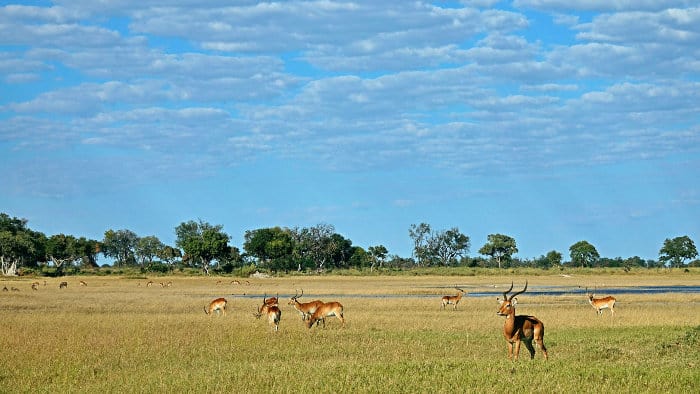
Antelope are beautiful sights on their own. Gazelle skipping across the plains. Oryx with their phenomenal horns. Red lechwe wading through knee-high Okavango Delta water.
They are so abundant they blend into the landscape. A good guide will show you one closeup, then simply drive on when you see more.
After all, when you’ve just witnessed 100 impala there’s no need to stop again. Animals like springbok are so common on a South Africa safari you can’t go a few moments without one.
Where There Are African Antelope There Are Predators
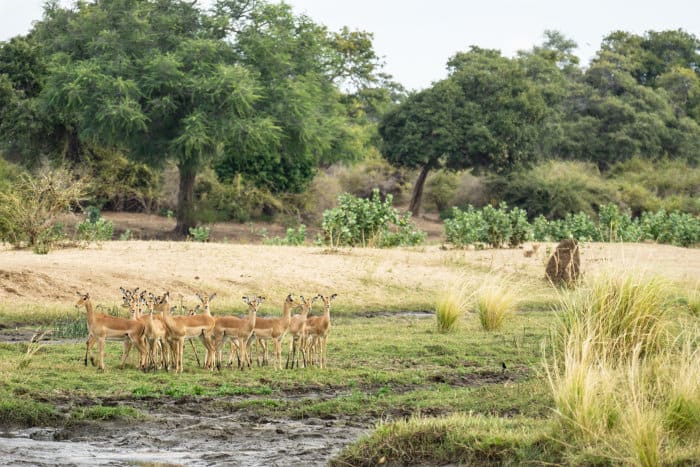
Live in Europe and it’s incredible just to see a single deer. Antelope are so abundant in Africa you might stop looking for them. That would be a mistake, because African antelope are never on their own.
They provide the prey to so many predators. Lions and leopards go after some. Cheetahs run fast to catch others. Small antelope are prey to the sky as well, as eagles swoop down from above.
Tiny antelope like dik-dik can also support small predators, such as jackals. And not a single African antelope is safe from the threat posed by hyenas.
So when you see antelope here is a tip – observe how they are behaving. Almost all antelope will stop, look and listen, at the tiniest hint of danger.
If a herd is standing upright, ears on high alert, there is a good chance a predator is near. Maybe you can follow a hunt, or maybe you will watch African antelope skillfully evade their hunters.
Getting Closer With Walking and Water Safaris
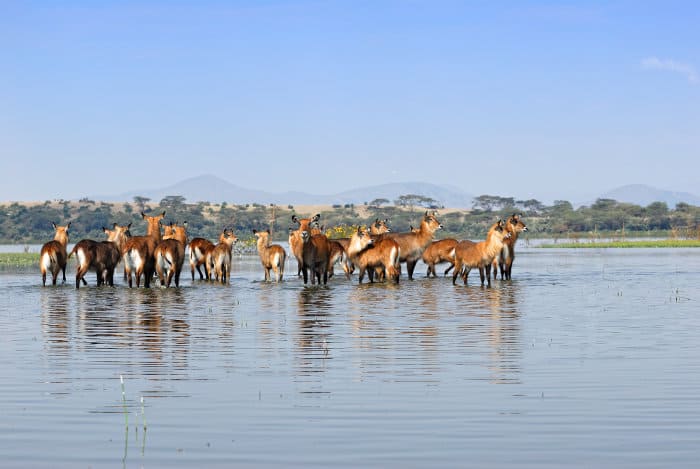
Although majestic and charming, most people do not find antelope very impressive. That’s usually because they only see them on a game drive.
Vehicles are large and noisy. All African antelope consider vehicles potential danger, so they retreat or run off.
A vehicle is great for appreciating the size of an elephant or safely encountering a lion, but it doesn’t do justice to African antelope.
From a vehicle you will see the antelope in the distance from on high. But on walking and water safaris the experience is completely different.
Large antelope are not scared of you, after all, they’re bigger than you. You can move relatively silently, so the animals are not startled. Plus, you can gauge an antelope’s reaction, then creep even closer.
And these incredible animals are much bigger when they are viewed from ground level. Share the savanna with African antelope and you will understand how unique they all are. Or silently cruise past a riverbank and admire a herd taking a drink.
There Are 72 Antelope Species in Africa
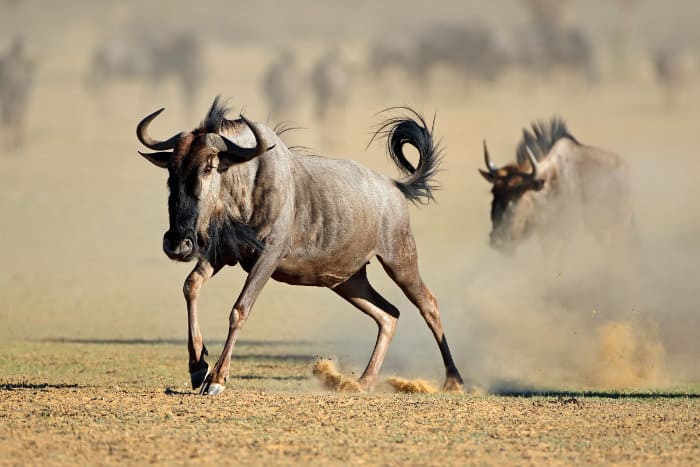
Wow! 72 different species of antelope inhabit the African savanna, from Saharan specialists to rainforest dwellers.
Some are incredibly abundant. Around 1.5 million blue wildebeest roam around the Serengeti and Masai Mara on their annual wildebeest migration. There are over 2 million impala across Africa and almost 1 million springbok just in South Africa.
Other African antelope are critically endangered. Some of these species are at risk of extinction. If you don’t go on safari soon you may never see them.
Endangered African Antelope to See on Safari in 2025 and Beyond
To make antelope identification easier we’ve got four different guides.
Explore the largest antelope species in Africa.
Discover the world’s smallest antelope.
Enjoy our handpicked collection of Africa’s most elegant antelope species.
How about Africa’s fastest antelope?
Let’s get serious now. The following African antelope are classified as endangered or critically endangered on the IUCN Red List.
These are the antelope that you won’t find everywhere, the animals top of the list for safari aficionados. Hopefully you can visit Africa, connect with your wild side, and admire these remarkable creatures out in the open.
Sable antelope
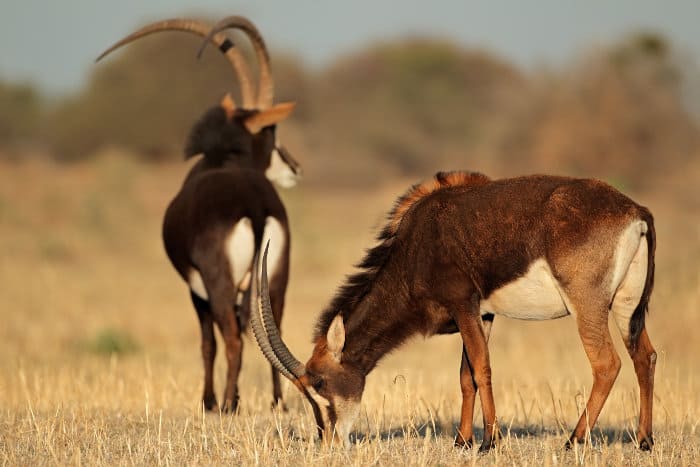
With their dazzling black and red fur, sable antelope are a striking sight across the Southern Africa savanna.
Incredible horns and a barrel-chested physique make sable a dangerous meal for all but one predator. Lions aren’t killing them, but people are shooting them as trophies.
Gerenuk

A top contender for Africa’s most unusual antelope, gerenuk have evolved the same way as giraffe. Their bizarre long neck means they can feed from high tree branches and enjoy food that others can’t reach.
Not only that, gerenuk have evolved to a life without water. They take all the fluid they need from juicy leaves.
Dama gazelle
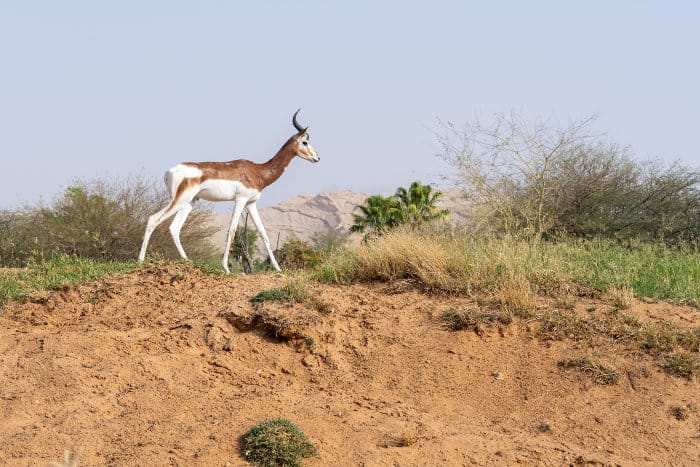
Critically endangered and only found around the Sahara desert, the dama gazelle lives on in Mali and Chad. It’s now the national symbol of Niger.
In comparison to the Thomson’s gazelle of East Africa, dama are much bigger and can weigh in at 75 kg!
Bongo

Another critically endangered African antelope, bongo are now restricted to the forests of Kenya and Central Africa.
They are similar to the more numerous bushbuck and have a splendid coat of bright orange with white stripes.
Red forest or yellow-backed duikers
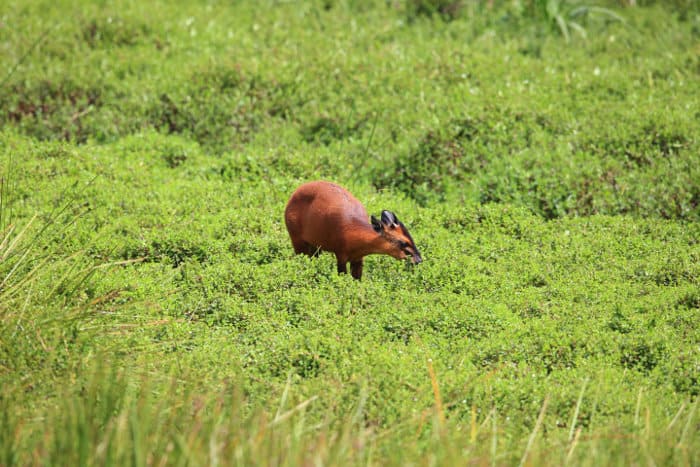
There are over 20 duiker species in Africa. Other than the common duiker, every other species has a declining population. Read all about the dainty duiker here.
Abbott’s duiker are so rare nobody had even photographed one until 2003. Most red or yellow-backed duiker species are now endangered, to keep your eyes peeled on safari.
Roan antelope
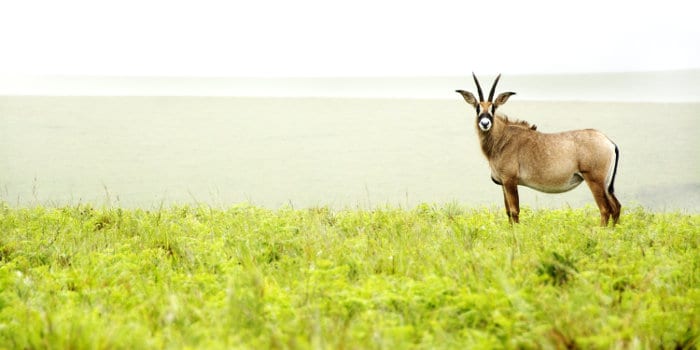
Roan antelope come fifth on the list of largest African antelope. Appearing more like horses than antelope, they have striking black and white faces plus impressive horns.
They are big and they are hunted, mostly by humans. Although not yet considered an endangered species, their numbers are declining drastically throughout most of their range.
If you’ve been inspired by this antelope guide you can explore more African animals here.
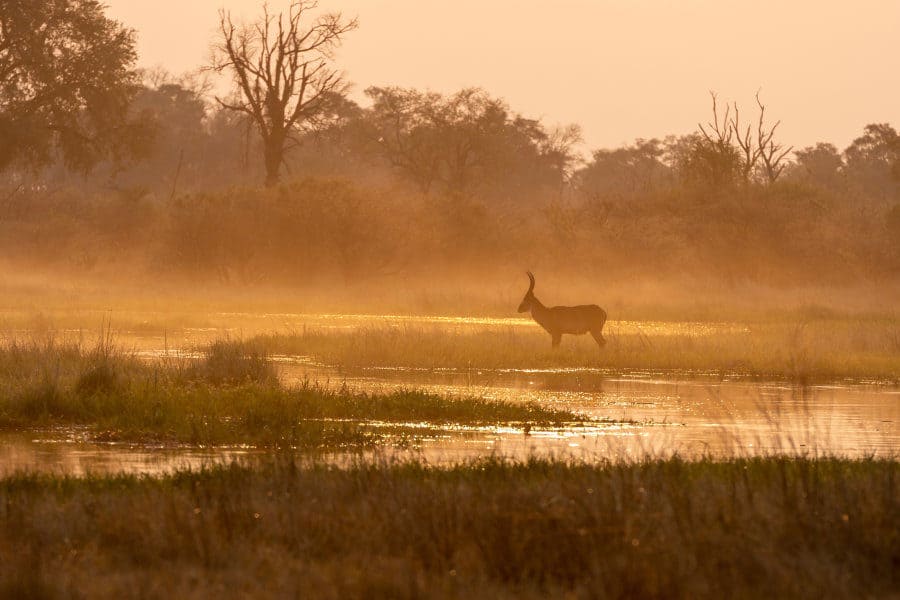

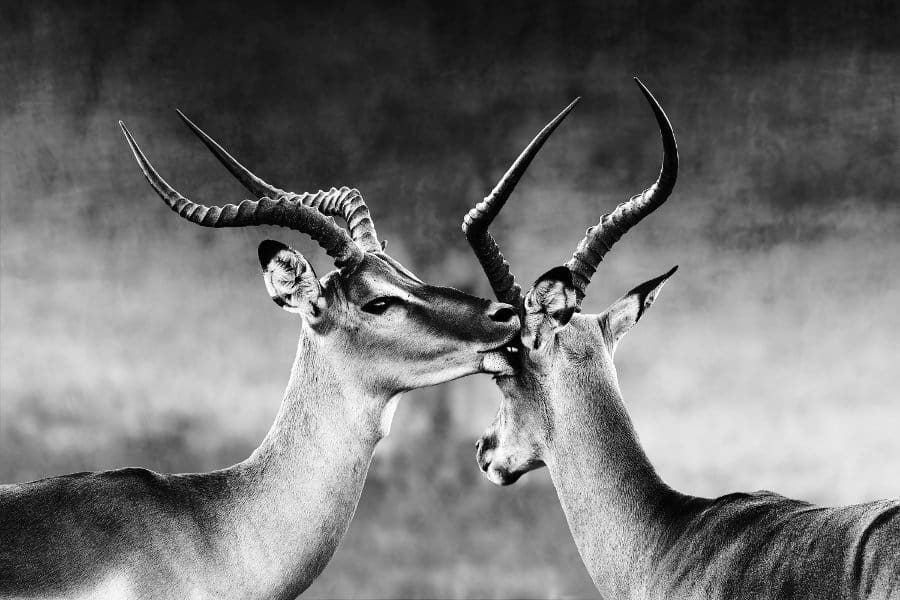
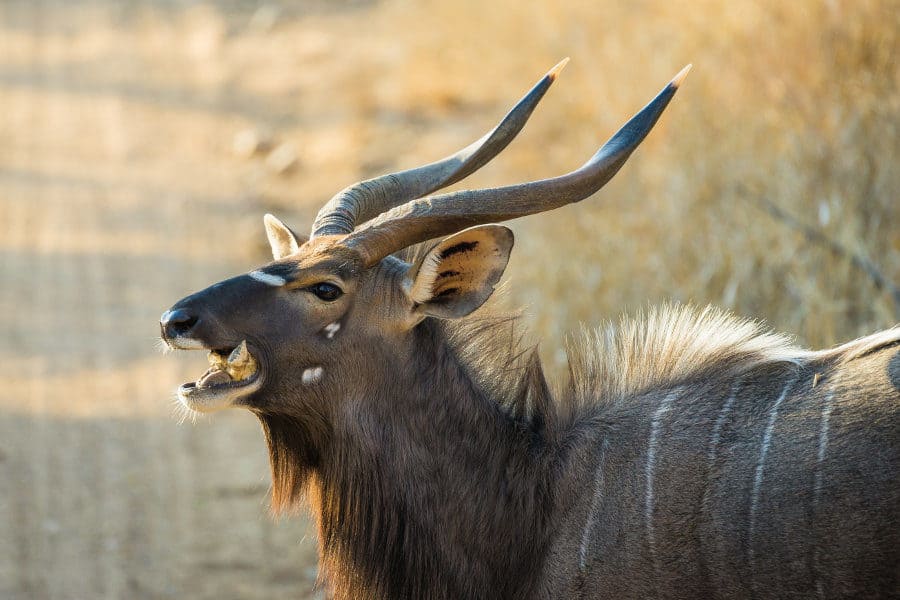
The description of the antelope species is so much interesting, I don’t even get tired of reading it.
Glad you found the antelope guide interesting, Jonathan! 🙂